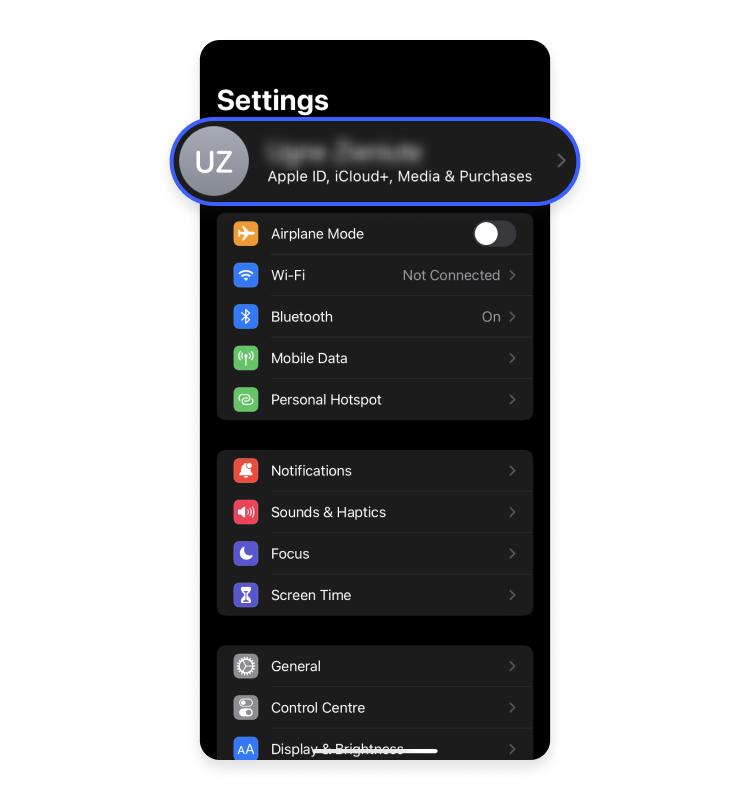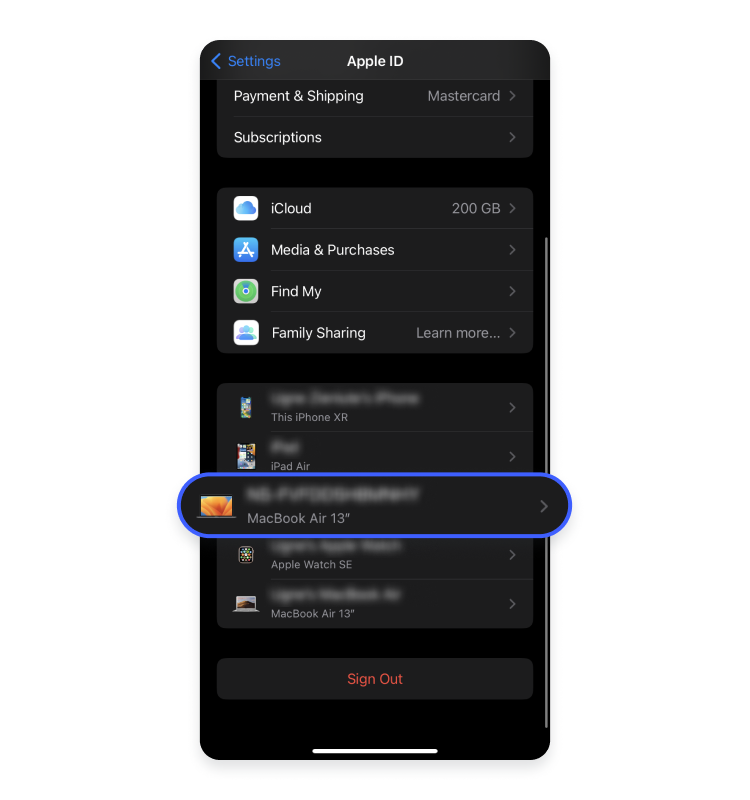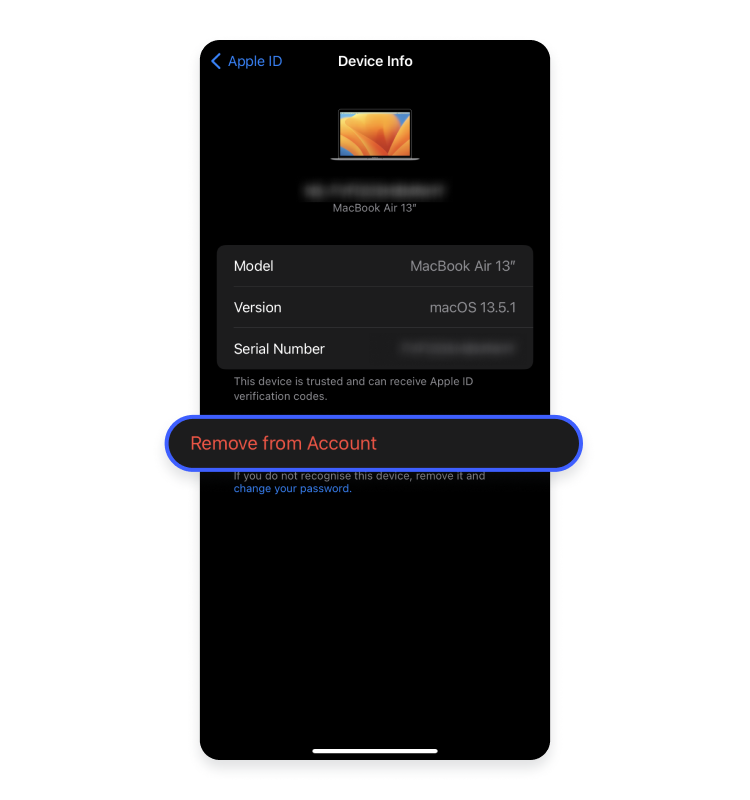Is iCloud Safe? A look at iCloud security
The iCloud storage service lets you keep your information secure and available across connected devices. Thanks to Apple’s comprehensive iCloud security features that protect your data, all you have to do is use them and make sure you don’t compromise your Apple ID credentials.
Table of Contents
Table of Contents
How secure is iCloud?
Apple applies high security standards, offering its customers robust protection for their iCloud services with two-factor authentication and strong encryption. These security features protect your iCloud account from fraudulent attempts to gain access. Let’s look at them in detail:
- Two-factor authentication (2FA). Apple highly recommends enabling two-factor authentication for your Apple ID. 2FA means that you have to provide two forms of verification — a password and a verification code — to access your Apple ID and, subsequently, your iCloud account. You can choose to receive the verification code as a text message or phone call to your trusted phone number, as a notification on your authenticated mobile device (iPhone or iPad), or generated on a password generator. Even if someone discovers your password, they won’t be able to access your account without the code.
- Robust encryption. Apple offers two options to encrypt your iCloud data — “Standard data protection” and “Advanced data protection.” Standard protection is the default option and means that your data is encrypted with standard encryption with encryption keys stored in Apple’s data centers and only part of the data encrypted end-to-end. Advanced data protection offers even a higher level of security. With this option, only your trusted devices have access to encryption keys for the majority of your data stored on iCloud, secured with end-to-end encryption. Only you, the owner, can access the end-to-end encrypted data with proper authentication. Even Apple can’t see this data.
- Data protection during transit and at rest. Once you upload your files to iCloud, your data is encrypted on your device and only then transmitted to Apple’s servers. It’s safe during transit to Apple’s servers and data centers because of the robust encryption. And it remains safe when stored on Apple’s servers for the same reason — robust encryption.
- Device-specific encryption keys. When you choose the “Advanced data protection” option and upload your files to iCloud, the majority of your data is encrypted using a unique encryption key generated on your device. This key is never shared with Apple or stored on their servers. When you want to access your data on iCloud, you have to sign in with your Apple ID and provide a verification code. Once you’re authenticated, your device requests an encryption key from Apple’s servers and decrypts your files locally on your device.
Most common iCloud risks and vulnerabilities
The most common risks to your iCloud account are related to compromised login credentials and unauthorized access. If you have a weak Apple ID password, haven’t enabled 2FA, have suffered a phishing attack, or lost your device, your iCloud security might be at risk.
- Weak passwords. If you use a short and common password, a cybercriminal can either guess it or crack it without much difficulty. Never use weak passwords or reuse the same one for multiple accounts, because if one account is hacked, the others automatically face danger.
- Not using 2FA. Without 2FA enabled, it would be much easier for a cybercriminal to hack into your iCloud account. 2FA provides an extra layer of security, so make sure to enable it for your Apple ID. If you are using your iPhone for receiving the verification code, make sure to maximize your iPhone security by creating a strong password and enabling biometric verification.
- Phishing attacks. During a phishing attack, a user receives an email or a message designed to trick them into revealing their login credentials. You can also stumble upon a phishing website designed to look like a legitimate one and persuade you into divulging your personal information, including login details. Be careful and don’t open any attachments or click any links in suspicious emails, messages, or on websites you don’t fully trust.
- Lost or stolen devices. If you lose your Apple device or someone steals it, and it is not secured with a passcode or biometric authentication, like Face ID or Touch ID, the thief could gain access to the content on your device. It is especially dangerous to lose your device if, at the time, you are logged in to your Apple ID, because a criminal could easily access your personal information, files, photos, and videos you store on iCloud.
The biggest iCloud security incidents
One of the most scandalous incidents involving possibly unauthorized access to an iCloud account was the case of Britney Spears. In 2019, the singer’s father, Jamie Spears, hired a security firm to spy on his daughter’s iCloud. He had an iPad and iPod logged in with Britney’s iCloud account for monitoring his daughter’s photos, videos, browsing history, FaceTime calls, notes, and iMessages without the pop star knowing a thing about it. It’s not clear how the father got Britney’s Apple ID passwords or if she had 2FA enabled.
In another case, in 2014, a group of hackers breached a number of celebrity iCloud accounts by compromising their passwords and security questions. Hackers proceeded to steal their victims’ nude photos and post them on an online forum. However, this was not a breach of iCloud itself but of specific user accounts. Cybercriminals could execute the hack with less difficulty because Apple introduced the 2FA feature a year later, in 2015.
How to know if somebody is monitoring your iCloud
If you want to find out if someone is monitoring your iCloud account, check if there are any unknown devices linked to your Apple ID. If someone gained unauthorized access to your Apple ID credentials, they could potentially link your Apple ID to their device and access your iCloud data.
This is how you can check for unknown devices linked to your Apple ID and remove them using your iPhone:
- Go to your iPhone “Settings,” tap your name, and scroll down to see the list of devices.

- Tap the name of the device you do not recognize.

- Then tap “Remove from Account.”

Once you remove a device, it will lose access to your iCloud and other Apple services until you sign it in again using 2FA. You will also no longer see the device in the list.
Tips to enhance your iCloud security
Here is a list of actions you can take to enhance your iCloud security:
- Use a strong password. If you want to increase your iCloud privacy, you should create a secure password that includes lower-case and upper-case letters, special characters, and numbers. Never use the same password for your other accounts. If you’re struggling to remember all your passwords, let a password manager like NordPass help you.
- Enable two-factor authentication. Make sure to enable 2FA on your Apple ID because it adds an extra layer of security to your account.
- Enable the Find My iPhone feature on your Apple devices. If you lose your iPhone, you can use this feature to locate it on a map and retrieve it before it falls into the wrong hands. And if someone steals your phone and there is no way to get it back, you can lock it remotely and erase its data. With the Activation Lock feature tied to the Find My iPhone feature, you can be sure no one will access your personal information without your Apple ID credentials.
- Never click on suspicious links and attachments. Always closely inspect every email you get, including ones from Apple, Google, or other services, in case it’s a phishing email. Never rush to click on a link or open an attachment because you can end up with malware on your device.
- Update your software on time. Postponing updates might endanger your device, because hackers can exploit a security hole that developers patched months ago.
- Use a VPN. A virtual private network encrypts your traffic and hides your IP address, thus improving your security and privacy. Never connect to public Wi-Fi without enabling a VPN first. Criminals can set a fake hotspot, trick you into connecting, and then monitor your online activities. With one NordVPN account, you can protect up to six devices: you can set up a VPN on your iPhone, iPad, Mac, and more. You will also enhance your privacy and data security by using a VPN when accessing cloud computing services.
Want to read more like this?
Get the latest news and tips from NordVPN.



